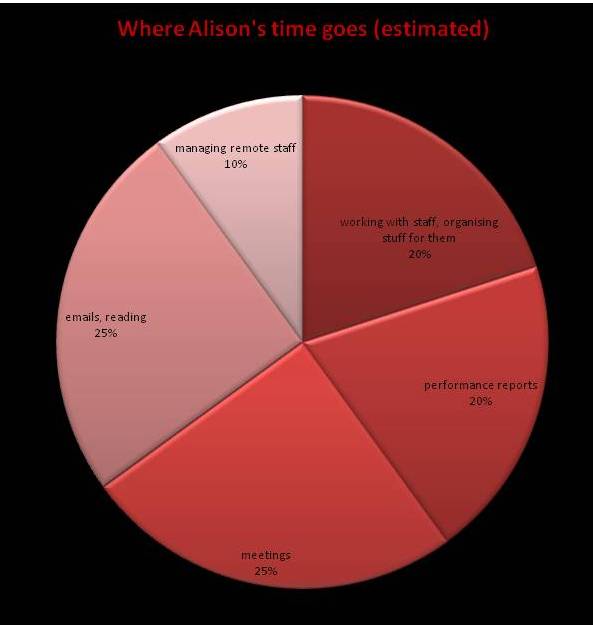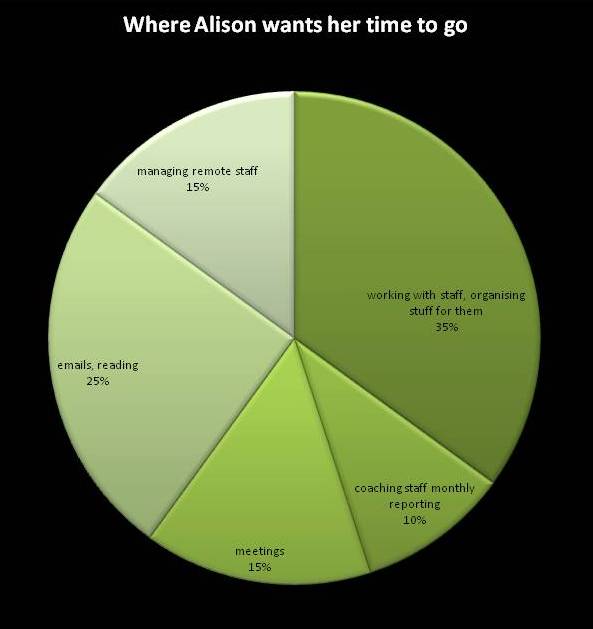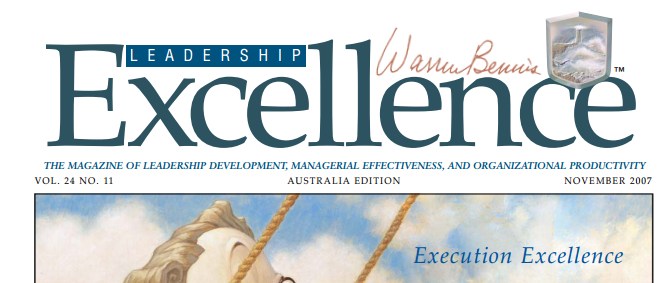Manage time using Business Process Re-engineering (BPR).
BPR your life takes the principles of business process re-engineering and applies them to the way you manage your time (and therefore your life).
This article was published in Leadership Excellence in 2006. Other authors in that issue include Warren Bennis and Dave Ulrich.
Five principles of re-engineering your life to manage time better
In recent years, Business Process Re-engineering (BPR) has revolutionised Australian business, allowing us to make more with less. BPR is a way to manage time in an organisation. Applying the principles of BPR to your own work patterns can similarly save you time and make you feel more productive.
Do you want to make more with less and manage time better? Here are the five principles;
- Be sure of your purpose.
- Discover where your time goes.
- Choose where it should go.
- Work out how to get the same outcome with different processes.
- Seek feedback on your productivity.
1. Be sure of your purpose

The first thing any BPR project manager asks is: What do we do?, What is our purpose? What outcomes are important to us?
When you do this with your own life and work patterns you will manage time better.
Alison used to think the purpose of her job was to process insurance. As a manager though, she discovered her purpose was to manage people who process insurance. That is, to manage work flow so customers are happy.
Once you know your purpose and the outcome that your role produces, then you can move to the second principle.

2. Discover where your time goes
The second principle is to discover where your time goes. There’s little point in spending 8 hours fixing something which will save you a minute a day. Something that will save you half an hour a day, every day is worth looking at.
Here’s how you do it:
- Draw a circle
- Cut it into pieces estimating where your time goes.

Alison found 20% of her time was spent working with and organizing things for her staff, 20% doing performance reports, 25% in meetings, 20% keeping up with emails and reading important information, 10% managing remote staff by phone and email.
If you’re really keen to be certain where your time goes, you can create a time log. Some people find the results of this mind-boggling. Write down what you do every 15 minutes. Then collate it into types, and create an actual pie chart, rather than an estimated one. Read this article by Cindy Tonkin 7 reasons to document what you do. It will give you more information about how to do this.
If your personality isn’t suited to this detailed approach, consider flow charting your major activities. For example, flowchart a typical meeting – from scheduling to publishing minutes. Add time estimates for how long each piece takes. Add it up. You may be surprised where the time goes, and may want to change how you do this!.
3. Choose where your time should go
So you have a picture of where time goes.
Now consider where you’d like to spend more or less of your time. Make a pie chart of where your time should go, given the purpose of your role. Analyse the differences between actual and should (or estimated and should). Then decide which slice you’ll make the change to first.
4. Generate the same outcome with a different process
When deciding how to manage time, ask this simple question: Do I need to do it? And if you do, Can I get the same outcome with a different process?
When Alison did this exercise, she thought she should spend more time directly with her staff, and less time doing performance reporting. She now refuses meetings with no agenda or where there are too many people there for it to be productive. She says this step has slimmed down her calendar, and now she’s spending more time making things work for her team.

She does some other things differently too. She delegated the writing and proofing of monthly performance reports to 2 different staff each month. Instead of spending 10 hours a month doing a report she already knows how to do, she now spends 5 hours coaching her staff to do it. She’s getting the same outcome, using a different process.
She has also changed her monthly team meetings to daily 5 minute whole-team meetings. Previously these were scheduled for an hour, but often lasted up to 3 hours. She also runs smaller team briefings half an hour each week. Information flows more quickly, people feel informed, she spends less time preparing, and the meetings are pleasant. She also keeps minutes of meetings and copies of any important documents for the team on a shared drive so they can easily refer to them.
When you look at the differences between where you spend your time and where you should be spending it, what changes come to mind? How can you manage time more effectively? Remember to ask how you can meet the same outcome with a different process. And make changes to the biggest chunks first. This will help you manage time more effectively.

5. Seek feedback on your productivity
The final principle is to seek feedback to ensure that you make more with less. This will help you manage time effectively. Alison estimates she spends 2 hours a week less in meetings than she did before. And when she redirected her time, her team productivity figures jumped by 7%. There are small dips each month when staff spend time on reports, but things always bounce back. The biggest improvement in productivity came from changing to five minute staff meetings.
If you go through these exercises and the numbers do not change, that’s not necessarily bad. If you and your staff are happier and there has been a rise in productivity, customer satisfaction or sales levels, that’s a win, right?
Applying Business Process Re-engineering principles to your own workload to manage time better is a simple idea. When people like you take it on, you not only gain satisfaction, but also the knowledge that you have a choice in how you manage time.


